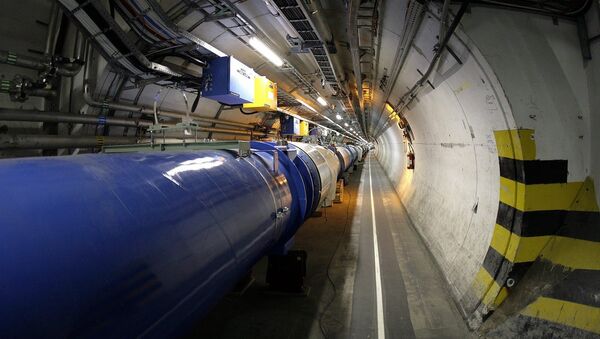Dubbed X17, this particle’s existence would require a rewriting of the Standard Model of particle physics, the theory that describes the fundamental forces and classifies subatomic particles – but only if it can first be verified.
The same group of researchers who published the controversial paper also reported the first evidence of the particle, in experiments done with radioactive beryllium atoms back in 2016. The physicists measured the light and particles released by the beryllium as it broke down. They noticed that emitted pairs of electrons and their antimatter partners, positrons, tended to go speeding off at a certain angle, behaviour that didn't seem explainable with existing physics. The physicists concluded that there must be some unknown intermediate particle that the beryllium decayed into before that particle then emitted the electron and positron pair. This unknown "particle X" was calculated to have a mass of nearly 17 megaelectronvolts – about 34 times bigger than an electron – and was called X17.
The new study added more observations of the proposed particle, seen in the decay of helium atoms. A similar experimental setup again showed evidence of an intermediate particle with effectively the same mass. The findings show that this proposed X17 particle isn't a fermion — the type of particle that makes up ordinary matter — but rather a boson, a particle that carries the energy and sometimes forces. This means that X17 might convey a previously unknown fifth force, which the physicists said could help explain dark matter, the mysterious substance that makes up 85% of the matter in the universe.
The new paper has not yet been peer-reviewed since its initial publication on October 23. Most physicists remain sceptical — in part because no outside scientists have yet been able to independently validate earlier findings from the same research team, Richard Milner, a physicist at the Massachusetts Institute of Technology who was not involved in the research, told Live Science.
“I'm skeptical. I think, as an experimentalist, that's my natural position when I see something like this, but I think it needs to be investigated,” Milner told Live Science.
The European Organization for Nuclear Research, or CERN, had previously followed up the research and tried to hunt for the X17 particle and failed to find any evidence of it. In light of the new evidence, many more groups will likely continue to search for the particle.
If confirmed, the discovery could also open a whole new way of doing particle physics, Milner said. For the past half-century, physicists have made huge progress in defining the Standard Model by focusing on the high-energy realm, which requires huge international collaborations and expensive accelerators to smash particles together at mind-boggling speeds. The new work, however, is done at much lower energies and costs, and would become an entirely new direction for physicists to look for new particles.
“The Standard Model of physics is very well defined,” Milner said. “So if one finds a new interaction beyond it, that is just tremendously important.”



